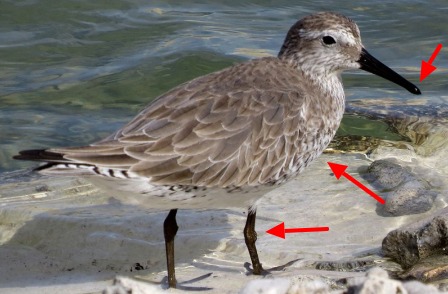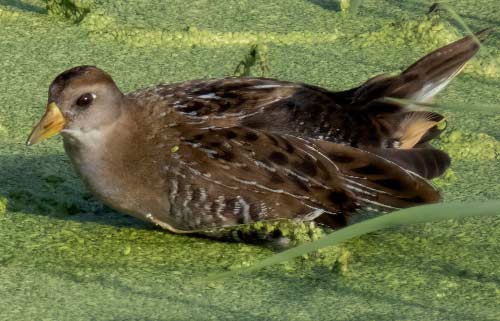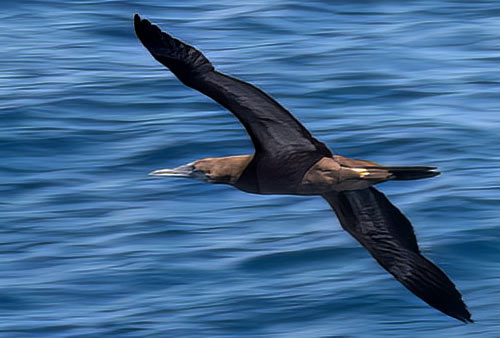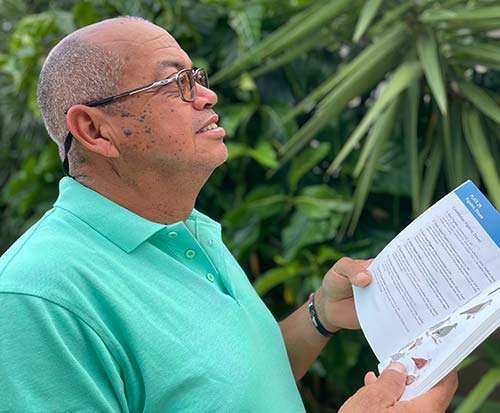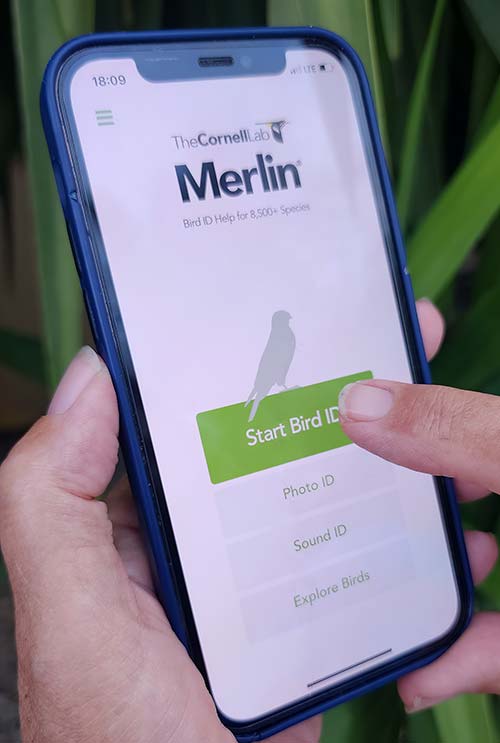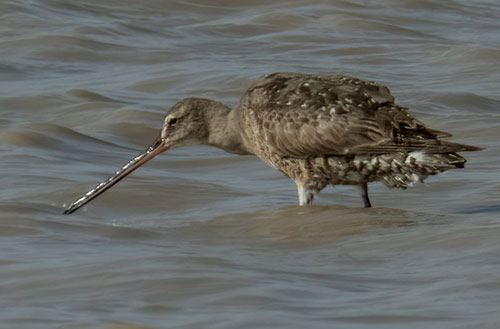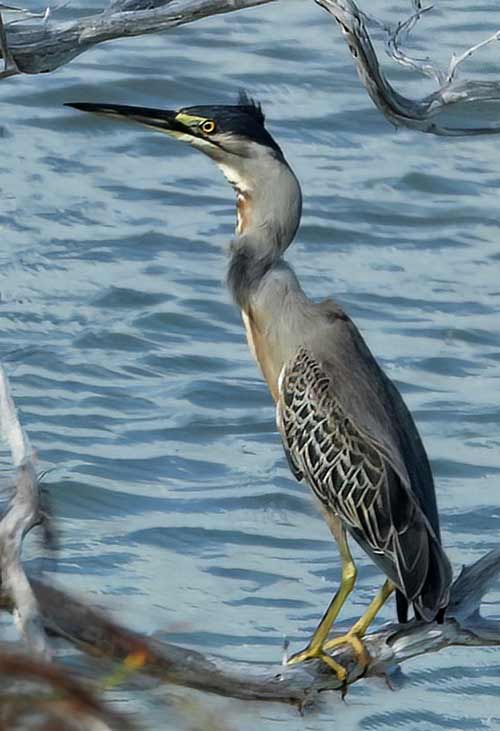Bonaire Bird Identification in 4 Easy Steps
Take your bird identification skills to the next level.
Posted April 10, 2023.
Use these 4 easy steps for Bonaire bird identification.
Are you intrigued by the ability of local bird guides to identify birds with just a glance or by listening to their unique calls? It may seem like magic, but the truth is that bird identification is a skill that anyone can learn. By following four easy steps, you can start identifying birds like a pro. Whether you’re a nature enthusiast, a bird-watching hobbyist, or just someone who loves spending time in the great outdoors, these four easy steps will help you take your bird identification skills to the next level. Get ready to impress your friends with your newfound ability to identify the local bird species with ease.
1. Observe the bird’s physical characteristics:
When you are out birding, the first step in identifying different species of birds is to observe their physical characteristics including key field marks. This entails taking note of the bird’s size, shape, color, markings, beak shape, and feather patterns on the body, tail, or wings. These features can be used to narrow down the list of possible species.
If you visit Bonaire between November and February, you may encounter birds in winter plumage. Winter plumage, or non-breeding plumage, refers to the seasonal changes in the coloration and feather patterns of many bird species that occur during the winter months. This adaptation allows birds to blend in with their surroundings, providing them with camouflage and protection from predators. Winter plumage is usually more subdued and drab, as seen in the Red Knot pictured here, compared to the bright and vibrant colors of the breeding season. During the summer breeding season, this same Red Knot will sport a bright cinnamon chest and belly!
When observing the bird’s physical characteristics, it is important to take note of the overall shape and proportion of the bird, as well as its size relative to other birds you may be familiar with. Pay attention to the color of its feathers, as well as any distinctive markings or patterns. Take note of the shape and size of the bill. Finally, pay attention to the bird’s legs, including their shape, color, and length.
2. Listen to its call or song:
Birds are known for their unique calls and songs, which can be an effective tool for identifying them. Some birds have distinctive calls or songs that can be easily recognized, even by people who are not familiar with birds. For example, the Pearly-eyed Thrasher is known for its distinctive song, a series of slowly given whistled notes with one to three phrases.
To use bird songs, or other vocalizations, to identify it, you can use a bird call app or listen to recordings online. Some bird identification guides also include sound recordings, which can be helpful in identifying the bird. When listening to the bird’s call or song, take note of its rhythm, pitch, and duration, as well as any other distinctive features, such as pauses or trills.
Song of the Pearly-eyed Thrasher
3. Look at its habitat and behavior:
Birds are often found in specific habitats and have distinct behaviors. Observing where the bird is and its actions can give you further clues to its identity. For example, if you observe a bird in a wetland area, it is likely to be a species adapted to live near water, such as a heron or waterfowl, or the Sora pictured here. If you observe a bird foraging on the ground, it could be a seed eater, such as the Saffron Finch.
In addition to its habitat, you can also observe the bird’s behavior to gain further insight into its identity. For example, if you observe a bird that is hopping along the ground and picking at insects, it could be a warbler. If you observe a bird that is diving into the water and catching fish, it could be a seabird, such as a Brown Booby, seen here, or perhaps an Osprey, plunge-diving for a fish.
4. Use a field guide, or a bird identification mobile app, or hire a local guide.
Birds of Aruba | Bonaire | Curacao, published in 2017, is the most recently published Bonaire field guide.
Finally, you can use a bird field guide, either in print or online, to compare your observations to the descriptions and pictures of different species. A good bird identification guide will include information on the bird’s physical characteristics, calls, habitats, and range. This information can be used to help you identify the bird based on your observations.
When using a bird identification guide, it is important to compare your observations to the descriptions and pictures of multiple species to ensure that you have accurately identified the bird. Pay attention to the bird’s size, shape, color, markings, and bill color and shape, as well as its habitat and behavior, to help you make the best match. Also, keep in mind that the season might be important–some birds are migrants and will only be observed on Bonaire during certain times of the year.
Use the Merlin Bird ID app right on your mobile phone.
The Merlin Bird ID app is a great tool for birdwatchers and nature enthusiasts. With this app, you can easily identify birds on the go, right on your mobile phone. Whether you’re in your backyard, hiking in Bonaire’s tropical dry forest, or along the coastline, the Merlin Bird ID app can help you quickly identify the birds you see. Simply take a photo or enter information about the bird’s size, color, and behavior, and the app will provide you with a list of possible matches, complete with photos, descriptions, and sounds. This app is a must-have for anyone who loves birds and wants to learn more about the wildlife around them.
Enjoy the expertise of a local guide.
Another option for bird identification is to hire a local guide, who may be especially helpful if you are new to birding or if you aren’t familiar with the species which you might observe here on Bonaire, as they will have a deep knowledge of the local bird species, as well as the habitats and behaviors for each, and can help you identify the birds you observe.
A local guide can also help you find the best bird-watching locations, as well as provide information on the best times of day to observe different species. They can also provide insight into the behaviors and habits of the birds you are observing, helping you to understand their patterns of activity and the reasons behind their behaviors. Consider your local guide as an interpreter, helping to explain what you are watching; understanding bird behavior is a wonderful way to get into the mind of the bird and understand exactly what makes it tick.
Bonaire Bird ID for mystery birds.
All of these techniques work very well for the common birds you might encounter, but occasionally you’ll have a mystery bird.
If you’re still struggling to identify a bird after trying the above steps, then you may want to look into specialized ID techniques. Shorebird identification, for example, requires an understanding of basic shorebird anatomy and behavior, as well as good observation skills. Raptor identification often involves using flight silhouettes and other plumage characteristics.
Finally, if all else fails, you can consult the Bonaire Bird List, which includes images and short descriptions of many of the birds that you’ll encounter on Bonaire. This list might assist you in identifying a rare or uncommon species that may not be included in other field guides.
Are you ready to get out and ID those birds?
After learning these four easy steps to identify birds and understanding the various concepts that might apply to your observations, I hope you are feeling more confident in your birding skills. However, it is important to remember that Bonaire bird identification can be a challenging and ongoing learning process. The island is home to a diverse range of bird species, each with its own unique characteristics and traits. By practicing your skills and paying attention to the details, you can start to confidently identify the different bird species you’ll encounter here. So grab your binoculars and camera, and head out to explore the island’s rich bird life.
(Images courtesy of the author.)
Sign up to receive notifications when a new article is posted.
About the author:
 Susan has been living on Bonaire for over 30 years. She is a certified bird guide, as well as a topside and underwater photographer. She is a 2016 graduate of the Caribbean Birding Trail Interpretive Guide Course conducted by BirdsCaribbean.
Susan has been living on Bonaire for over 30 years. She is a certified bird guide, as well as a topside and underwater photographer. She is a 2016 graduate of the Caribbean Birding Trail Interpretive Guide Course conducted by BirdsCaribbean.
Get in touch with Susan
Contact Susan via email, Facebook Messenger, call Susan or use the online form below.
If you have any questions about your Bonaire birding tour, feel free to contact Susan for answers. She is always willing to go into more detail about routes or the best times for a tour based on your personal preferences. Tours can be tailored to your interests, whether that be birds, photography, or both!
It is also a good idea to do some homework on the birds of Bonaire before you come. Knowing a little about the birds you might encounter on your tour will make your experience even more enjoyable!
Be sure to check out these resources for birding on Bonaire. Also, reading the Bird Blog will introduce you to the birds that might be observed on Bonaire.
Get In Touch
Get in touch with Susan to check availability for the dates you are visiting Bonaire.
Consent: By using this form you agree with the storage and handling of your data by this website.

